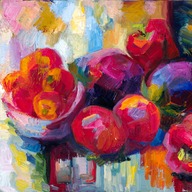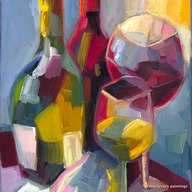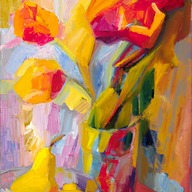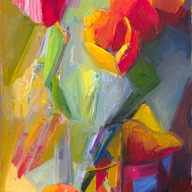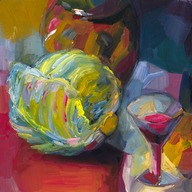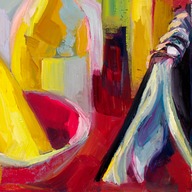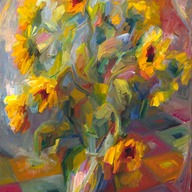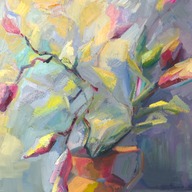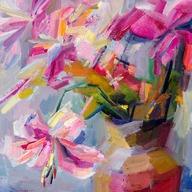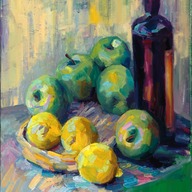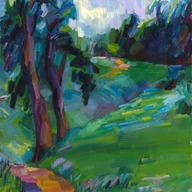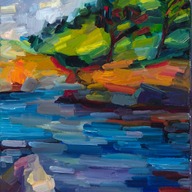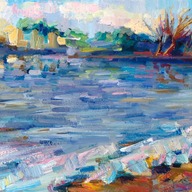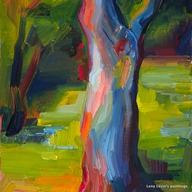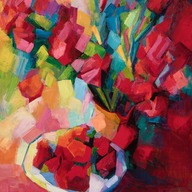| Burning Ochre (2010 - April 2012) | |||
This body of work represents the best of what, in retrospect, I consider the first period of my new painting life. I call it "burning ochre", after Boris Pasternak's poem "August", because this idea (and this poem) guided me through this period. | |||
|
The "burning ochre" of the poem is the colour lent by the arising sun to everything around the poet and awakening him from a dream in which he witnessed his own funeral and bid farewell to his life, his work, and his beloved. Here are the first two quatrains:
Conceptually, then, the burning ochre stands for the awakening from a nightmare, the acuteness of being alive and present, the ultimate non-existence of death in the face of sunlit beauty of simple everyday things, from the woods around to the strip of wall behind the bookshelf. And that's exactly what my return to painting meant to me. At the beginning, it was first and foremost direct painting from life, rekindling my sense of vision, seeing everything afresh – be it the grandeur of Pacific or simple everyday things; opening myself again to the burning ochre of sunlight and its power to transform everything into an affirmation of life with a single touch. Technically, this doesn't mean that the ochre is dominant or even visible in all pieces; as far as the dominant colour is concerned, they run the gamut of the rainbow; yet the transparent gold ochre (which, after a long search, I perceive as the closest earthly counterpart to the idea of burning ochre Boris Pasternak planted in my mind many, many years ago) was an essential component of my palette during this period. It was always there, even though not always apparent — exactly like the ideal it stands for. Each work from this period refers to a specific place and time; each is faithful to the reality of the moment, and yet none is realistic in the narrow sense of the word. Painting creates a special way of seeing, and seeing the subject matter before you creates the quintessential experience of painting, the powerful tension between what is there and what is seen: it is in this space between the supposed "reality" of the actual subject matter and the reality of its painted representation that the emotional state of the viewer is hidden. | |||

